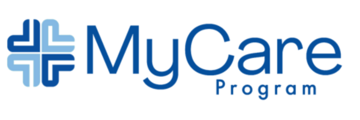Brief Overview: The terms undifferentiated systemic rheumatic disease (USRD) and undifferentiated connective tissue disease (UCTD) refer to the same clinical scenario, where patients have features suggestive of a systemic rheumatic disease but the exact type cannot be differentiated. Patients with undifferentiated systemic rheumatic disease (USRD) and/or overlap syndromes present with a constellation of symptoms and laboratory abnormalities that do not clearly fall into one disease subtype. They may manifest multiple nonspecific clinical or serologic abnormalities, sometimes of more than one defined rheumatic disorder.
Prevalence: The epidemiology is unknown. According to one study, the prevalence is ~20-25% of patients with connective tissue disease seen in rheumatology clinics.
Etiology: The etiology is unknown.
Risk Factors:
- Female gender
- Age between 30-55 years old
- Family history of autoimmune conditions
- Low Vitamin D is possibly a risk factor, but this is unclear
- Environmental exposures
- Prior infection (viral, bacterial)
Commonly Associated Conditions:
- Interstitial Lung Disease (ILD)
- Rheumatoid arthritis
- Lupus
- Sjogren’s disease
- Systemic Sclerosis
- Polymyositis/dermatomyositis
- Raynaud’s phenomenon
- Thyroid disease
- Anemia
Common Medications:
- NSAIDs
- Antimalarials – ex: hydroxychloroquine
- Corticosteroids
- Vitamin D – supplementation may be needed if Vitamin D deficiency is present
- Immunosuppressants – ex: methotrexate
Common Labs, Imaging, and Tests:
- Lab tests can include: ANA, CRP, RF, serum creatinine, ESR, CBC, CMP, urinalysis, thyroid function panel, CK, Vitamin D, etc. - based on symptoms and features present
- X-rays of joints
- Chest CT, lung biopsy
- Pulmonary function test (PFT)
- ECG
- Echocardiogram
- Ultrasound of the salivary glands
- Nailfold capillaroscopy
- Fundoscopy – eye exam of the fundus
- Skin biopsy
Common Symptoms:
- Joint pain, swelling
- Morning stiffness
- Rash
- Dry eyes
- Oral ulcers
- Raynaud’s phenomenon
- Fever
- Photosensitivity (light sensitivity)
- Muscle weakness
- Fatigue
- Alopecia (hair loss)
Common Treatments:
- Medication (see above)
- Physical and occupational therapy
Physical Findings:
- Nonspecific rash/skin lesions
- Oral ulcers
- Dry eyes
- Joint tenderness
- Raynaud’s phenomenon
Potential Complications and Contraindications:
- Progression to a specific diagnosis, like lupus or RA
- Progression/worsening to include further organ involvement
- Side effects of medications
- Misdiagnosis or delayed diagnosis
General Health and Lifestyle Guidance:
- If photosensitivity is present: minimize prolonged exposure to sunlight, wear protective clothing, wear sunscreen and sunglasses
- If Raynaud’s is present: minimize exposure to extreme cold, wear protective clothing including hat/gloves/socks as appropriate
- Smoking cessation
Suggested Questions to Ask Patients:
- Do you experience persistent fatigue or joint pain?
- Have you had any issues with dry eyes or mouth?
- Do your fingers change color in response to cold or stress?
- Have you had positive autoimmune lab results in the past?
- Have your symptoms changed or progressed recently?
Suggested Talking Points:
- You may be monitored by multiple specialists for your condition. Make sure to follow up with all providers as directed
- Discuss any symptoms you experience with your healthcare providers
- Ask your healthcare provider if any specific diet recommendations may be helpful
- Discuss exercises that may be safe for you with your healthcare provider
Sources:
